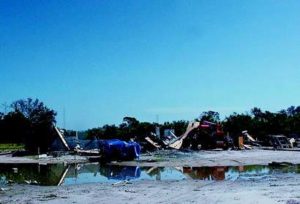By Wolfgang Friedel

Protecting Your Dental Practice
Since December 2005 Sullivan-Schein has been providing recovery services to many of the affected dentists assisting them in their efforts to achieve a fair settlement with their insurers as well as providing services to enable an efficient rebuilding of their practices. As the recovery team works through complex insurance issues, it has become evident that many of the dentists were not properly protected to cover their assets or their practice interruption needs. The question being asked by many dentists is: “What could I have done to better protect myself against such a disaster?”
The obvious answer is, of course, to buy the proper insurance coverage from the right insurance company with the broadest coverage and sufficient limits. But how does one know what coverage to buy and from whom? Is one well protected if the proper and available insurance policy is purchased? How much risk should one retain and how much should be transferred to an insurer?
The best way is to start with a proper analysis of the exposures and risks. Obviously risks to a dental practice vary widely and include malpractice risks, general liability risks, employee-related risks, and much more. For the purpose of this review, the focus is on exposures and risks to the facility itself and the consequential damage to the operations of the business. The basic question one needs to ask is what can happen to my facility? The answer depends on many factors, including the location of the office, the type of building structure, whether the building is owned or leased, neighbors, and proximity to emergency response teams (e.g., location of fire department).
Assessing Exposures
The decision of choosing a location for a dental practice is usually made by considering the potential for patients, the driving distance for the doctor to the dental facility, general appeal of the geographic area, architecture, cosmetics, and curb appeal. Very few dentists consider risk factors when determining their practice location, even though selecting the location; neighborhood, building construction, and loss prevention amenities can be the most important decision one makes in assuring a safe environment.
One could view two entirely different scenarios in the aftermath of Katrina—total destruction with complete inability to provide any type of services and within only a few miles the ability to provide virtually uninterrupted services to patients.
The reason why location selection is so important is the fact that even though the best insurance coverage might be purchased covering every aspect of a loss, not having had the loss is still the much preferred option. Aside from the fact that only very few losses are ever completely "covered," the hassle of dealing with adjusters, insurers, accountants, and other experts can be a very tiresome "exercise." The best loss is the one you can avoid.
Personal Property of Employees and Others
–This should have a sub-limit of at least $10,000.
Civil Authority/Ingress-Egress
–Extensions to cover possible practice interruption as a result of restricted access to the facility.
Accounts Receivables
–Set limits at about 25% of three months of billed amounts to pay for uncollectible receivables caused by physical damage to accounting documents.
Electronic Data Processing Equipment and Media
–Often has inadequate sub-limits, especially if your patient records are stored electronically.
Valuable Papers
–Limit should be adequate to pay for the reconstruction of all active patient charts. In addition, it is strongly recommended to maintain duplicate records off-site.
Employee Dishonesty
–This is a form of theft coverage specifically to cover the possibility of theft by an employee (normally excluded).
Of course, there are many more specific situations requiring coverage consideration based on the exposures. A careful review of coverages with the agent or broker is suggested. It is strongly recommended to request the broadest coverage available, and to have the agent or broker recommend available coverage extensions and limit increases to best protect the facility.
Facing the dilemma of being underinsured because the values were not properly assessed or reported is an insured’s worst nightmare. The impact of a major loss is devastating to the individuals affected, and having to deal with the issue of underinsurance or lack of sufficient coverage worsens the situation. At the time of a major loss, the insured should be able to feel adequately cared for by the agent and the insurer. The foundation for this appropriation is created when the decision on agent, insurer, and coverage is made. Rely on the people with expertise and knowledge in the insurance field to advise you, and, talk to your financial and legal advisers.
